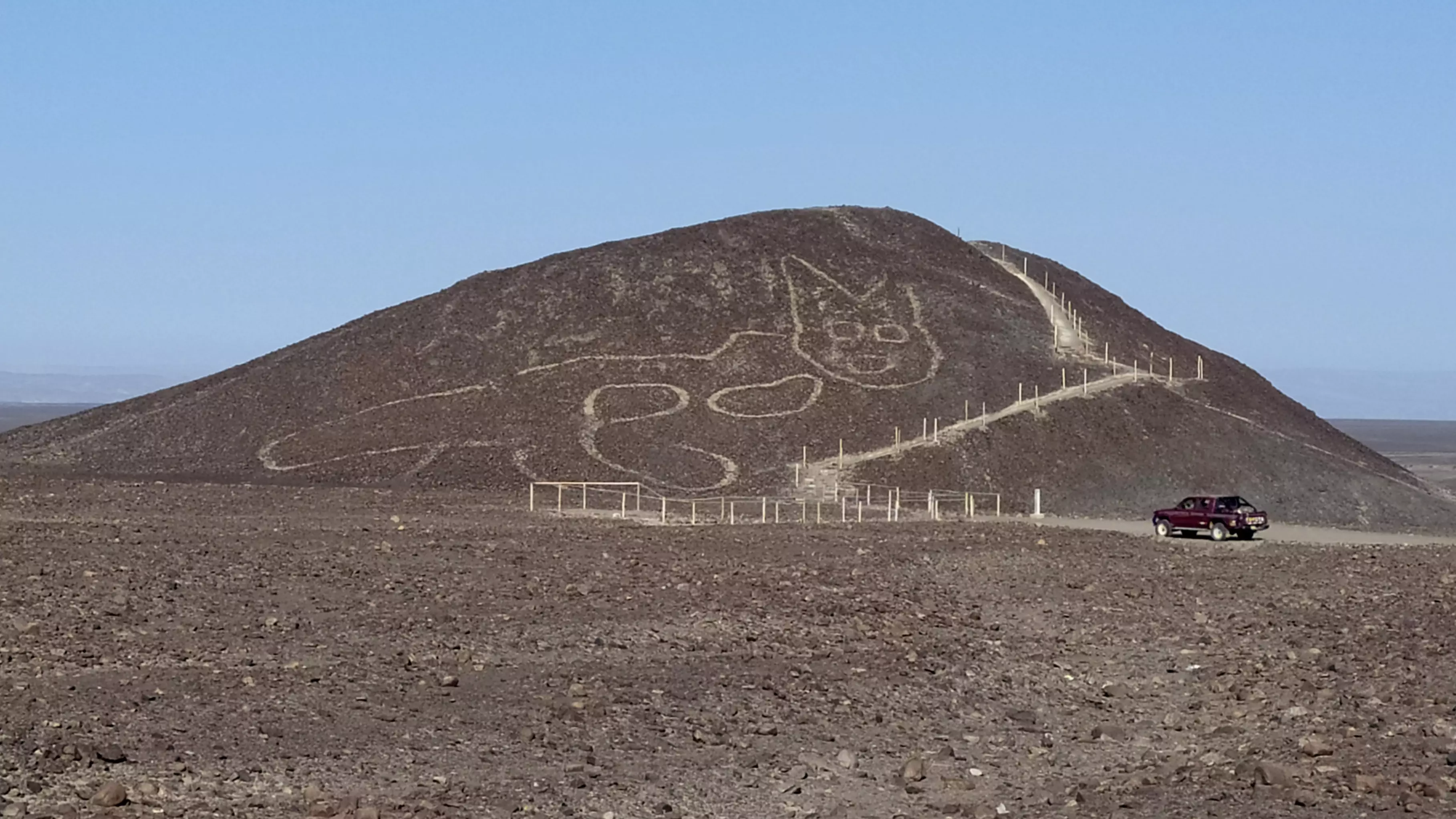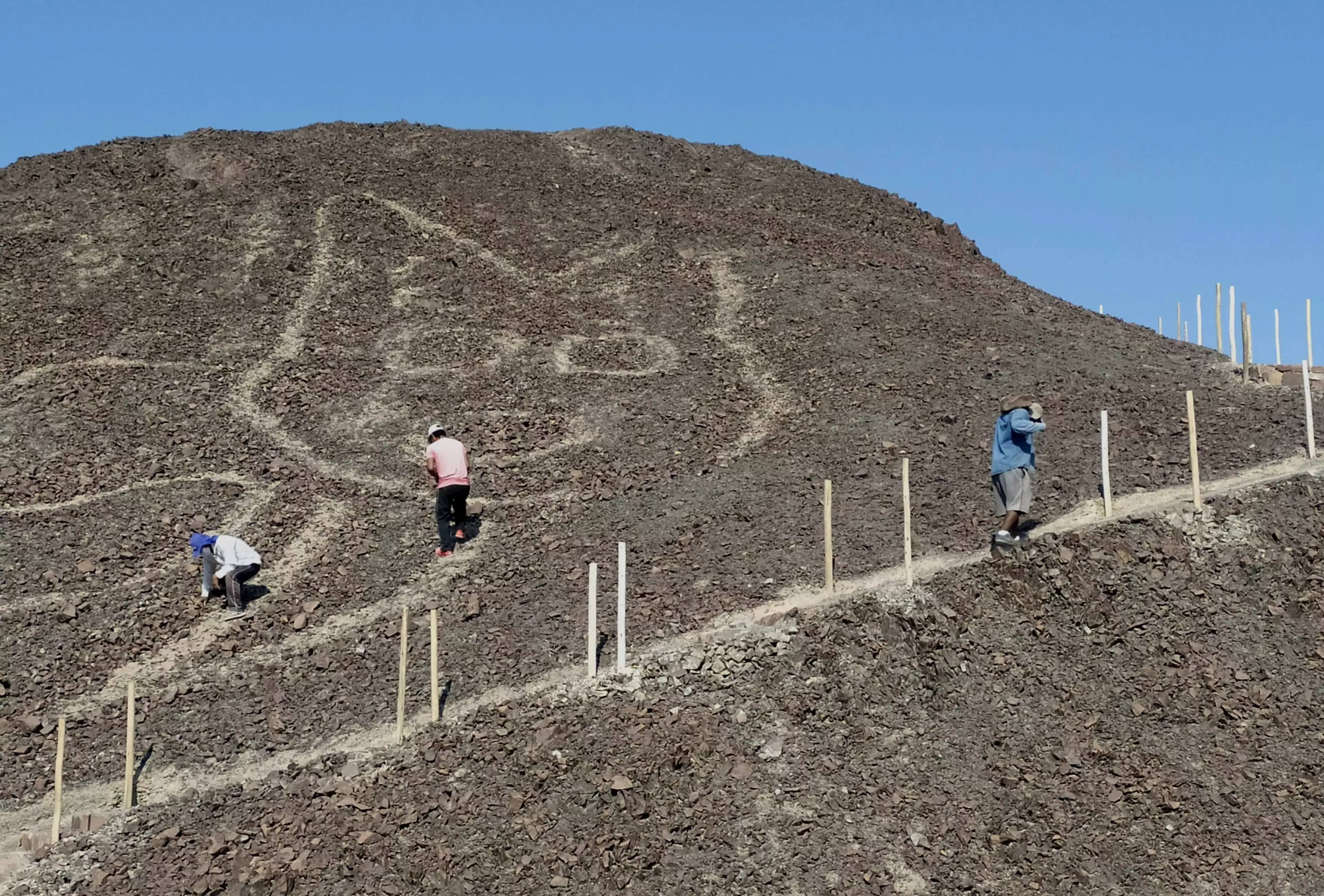
Archaeologists in Peru have uncovered a huge etching of a cat, the country's culture minister has confirmed.
The enormous design was found on a hillside in Nazca, home to the UNESCO World Heritage Site the Nazca Lines, which are depictions of animals, plants, and other shapes that stretch across the Peruvian coastal plain about 250 miles from Lima.
Measuring 37 metres long, the design is believed to date back to between 200 and 100BC, and was uncovered during work to improve the access to the hill and provide a better view for other motifs in the area.
Advert
In a statement, the Peru's culture ministry said the image was very faint.
They said: "The figure was scarcely visible and was about to disappear because it's situated on quite a steep slope that's prone to the effects of natural erosion.
"Over the past week, the geoglyph was cleaned and conserved, and shows a feline figure in profile, with its head facing the front."

Jhony Isla, director of the Nazca-Palpa management plan of the Ministry of Culture, said between 80 and 100 new figures have emerged over the past few years in the Nazca and Palpa valleys.
Advert
And he told the press he wouldn't be surprised if there were still more to be uncovered.
He said: "Well, one of the things that continues to surprise, and that many ask, is how we still find new geoglyphs, and in fact, there are new ones and we will continue to find more.
"These are smaller in size, drawn on to hillsides, and clearly belong to an earlier tradition."
Mr Isla explained that technological advancement and modern methods have led to the discovery of more designs.
Advert
He added: "This has improved a lot in recent years with the use of modern technology - before we had aerial photographs or photographs from the planes, but now we have photos that can be taken with the drones at very low altitude and that helps us a lot."

According to Mr Isla and archaeological experts, the cat etching most likely belongs to the late Paracas era.
He said: "We know that from comparing iconographies. Paracas textiles, for example, show birds, cats and people that are easily comparable to these geoglyphs."
Advert
The outlines of the huge motifs measure between 30cm and 40cm wide and were made by removing rocks and earth to reveal the contrasting shades.
The very first published recording of the Nazca Lines was by Pedro Cieza de León in his book of 1553 where he described them as trail markers.
Since then many people have offered varying reasons behind them. For example, historian Paul Kosok and archaeologist Richard P. Schaedel proposed they were astronomical markings to show where the sun and other bodies rose on certain dates.
Others have claimed they were offerings to Gods or were in fact created by extraterrestrials, though both theories are yet to be confirmed.
Featured Image Credit: PATopics: World News